Making cannabis edibles is easy. All you need is one simple infusion to help you transform any ordinary recipe into a delightful, psychoactive concoction. What is that simple infusion? Cannabutter.
Contents
- How To Decarboxylate Cannabis For Cannabutter
- How To Make Cannabutter: 5 Cannabutter Recipes Step By Step
- Cannabutter on a Stove Top
- Crockpot Cannabutter: Making Cannabis-Infused Butter in a Slow Cooker
- Instant Pot Cannabutter
- Cannabis-infused Ghee
- BHO Cannabutter
- Cannabutter with Salted Garlic-Herb Flavor
- How Do You Heat Cannabutter?
- Tips For Baking And Cooking With Cannabutter
- How Long Does Cannabutter Last?
- How Potent Is My Cannabutter?
While cannabis-infused cooking oils and coconut oils have grown in popularity, nothing can compare to a delicious, buttery recipe base.
Not only does cannabutter make delicious pastries, but opting for butter made from milk of grass-fed cows can give you an extra dose of vitamin K2 and brain-boosting omega 3 fatty acids.
Yet, before you get started on your next cannabutter adventure, there are a few things to keep in mind. Here is everything you need to know about cannabutter and five easy ways to make it:
How To Decarboxylate Cannabis For Cannabutter
There is one major trick to making excellent cannabutter: decarboxylation.
Decarboxylation is a fancy term for activating the cannabis. In its raw or dried state, cannabis contains very little tetrahydrocannabinol (THC). THC is a cannabis compound known as a cannabinoid that causes the psychoactive “high”.
In raw and dried cannabis, THC is locked into its acid form, called tetrahydrocannabinolic acid (THCA). To make cannabutter psychoactive, you need to convert THCA into THC through decarboxylation.
Decarboxylation uses heat to remove the acid group from the THCA molecule, creating THC. The same thing happens with other cannabinoid acids. For example cannabidiolic acid (CBDA) needs to be decarboxylated to create CBD.
Decarboxylation happens naturally as cannabis dries and ages. However, heating the herb transforms more cannabinoid acids into their active forms in higher concentrations over a shorter period of time.
To make sure your cannabutter is as potent and effective as possible, decarboxylating your herb prior to infusion is necessary. Here’s how to decarboxylate cannabis for edibles:
- Preheat oven to 240℉ (115℃).
- Line a size-appropriate cookie sheet with parchment paper (raised-edge is preferable).
- Break apart 7 grams (quarter ounce) to an ounce of dried cannabis flower into small chunks. Though, you can also use cannabis shake or trim.
- Spread the cannabis in an even layer on the parchment paper.
- Toast for 15 to 25 minutes for small batches or 30 to 35 minutes for larger batches.
- Stir cannabis occasionally, ensuring that it toasts evenly. Keep an eye on smaller batches for burning.
- Take out the cannabis when it is a golden, medium brown color but not too dark. Cannabis should be crumbly to the touch when cool.
- Cool the toasted cannabis and then coarsely grind the buds with an herb grinder or food processor.
- Decarboxylated cannabis can be stored in an airtight container or mason jar. Make sure it is size appropriate.
Note: If you plan on using shake or trim, you can use up to two ounces to ensure that your cannabis is potent enough. While cannabis flower purchased at a dispensary often contains around 20 percent THC, the THC content in trim will be much lower, around 10 to 12 percent.
How To Make Cannabutter: 5 Cannabutter Recipes Step By Step
Cannabutter on a Stove Top
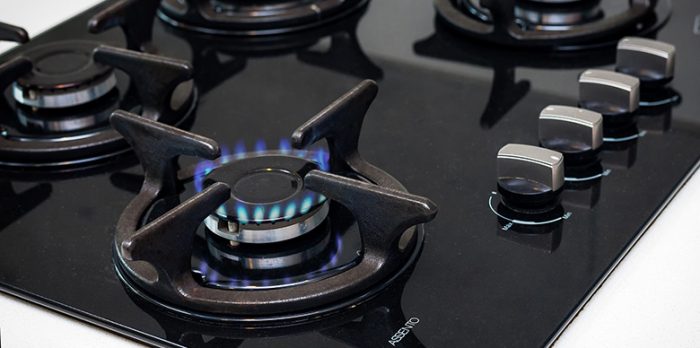
Total prep time: 1 hour (including decarboxylation)
Total cook time: 3 hours
Ingredients:
- 1 ounce high-quality, decarboxylated medical cannabis or 1-2 ounces of trim
- 1 lbs (450-455 grams) salted butter
- 1 to 2 quarts water
Materials:
- Stockpot or large saucepan
- Measuring pitcher (for water)
- Spoon
- Glass container (for cooling and refrigerating the butter, a glass measuring pitcher with lid works well)
- Cheesecloth or fine strainer
- Candy thermometer
Cooking the butter:
- Bring 1 to 2 quarts of water to a boil in a stockpot or large saucepan. The water prevents the butter from scorching and preserves flavor. It also makes the cannabutter easy to remove from the container later on.
- Once boiling, drop in the butter allowing it to melt.
- Add the decarboxylated cannabis, stirring well.
- Reduce heat to low-medium, and use a candy thermometer to maintain a temperature range between 240 and 250℉ (115-121℃) degrees, maintaining a simmer. (If you don’t have a candy thermometer, simply reduce heat and keep the cannabutter at a slow simmer.)
- Simmer mixture for three hours
Cooling the butter:
- After three hours, secure cheesecloth or strainer over your glass container.
- Carefully pour mixture over the cheesecloth or strainer, separating the plant material from the butter.
- When plant material is cool enough to touch but still warm, squeeze as much liquid as possible from the plant material.
- If using cheese cloth, a double strain may be necessary.
- Let butter and water mixture cool to room temperature, cover, and place in the refrigerator to fully harden.
- Once hardened, the butter will separate from the water. Remove separated butter.
- Put butter into an airtight container or wrap in plastic wrap for storage.
Note: cannabis compounds are not water soluble, but some small traces of butter may still remain in the water. For a pleasant, mellow kick, some people like to use the remaining water for tea.
Crockpot Cannabutter: Making Cannabis-Infused Butter in a Slow Cooker
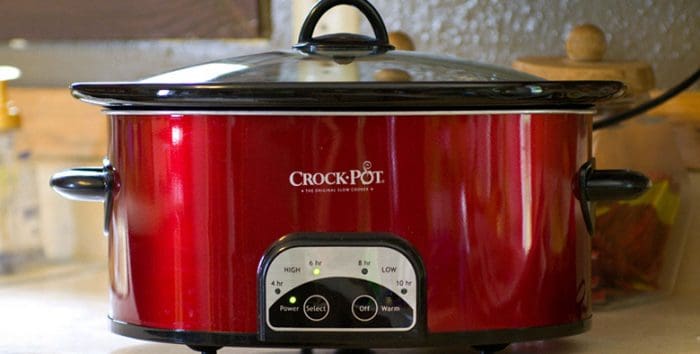
Prep time: 1 hour (for decarboxylation)
Cook time: 8 hours
Materials:
- Slow cooker or Cannabuter Crock Pot
- Glass container for cooling and storage
- Cheesecloth or fine strainer
Ingredients:
- 1 to 2 quarts water
- 1 lb salted butter
- 7 grams to 1 ounce ground cannabis
How long to cook cannabutter in a Crock Pot?
- Turn slow cooker on low and add in 1 to 2 quarts of water, 1 lb of salted butter, and your coarsely ground, decarboxylated cannabis flower.
- Place the lid on the slow cooker simmer on low for 8 hours, checking on the mixture and stirring occasionally. A shorter cooking time prevents less of the chlorophyll taste from entering the cannabutter.
Cooling the butter:
- After three hours, secure cheesecloth or strainer over your glass container.
- Carefully pour mixture over the cheesecloth or strainer, separating the plant material from the butter.
- When plant material is cool enough to touch but still warm, squeeze as much liquid as possible from the plant material.
- If using cheese cloth, a double strain may be necessary.
- Let butter and water mixture cool to room temperature, cover, and place in the refrigerator to fully harden.
- Once hardened, the butter will separate from the water. Remove separated butter.
- Put butter into an airtight container or wrap in plastic wrap for storage.
Instant Pot Cannabutter
Instant pots are great for making cannabutter because you can do everything from decarboxylating your buds to making the actual cannabutter with a single machine. There’s different sizes of Instant Pots – we recommend using a 6 quart machine for a half ounce of weed.
Materials:
- Instant pot
- 1 pint (or 16 oz) canning jar
- Jar for storage
- Canning jar lids
- Canning jar rings
- Canning rack or canning ring
- Cheesecloth
- Hot mitts so you don’t burn your fingers
Ingredients:
- 1 cup of butter (a standard sized stick)
- 1/2 oz cannabis flower ground
- Water
How to make cannabutter in an instant pot?
- Grind up your weed nice and fine
- Place ground cannabis in a canning jar and close it up with a canning lid and ring
- Place in the Instant pot on top of a canning ring or rack so it’s not directly on the bottom of the machine
- Fill Instant pot with water so it reaches about halfway up the jar
- Close the lid and set to Pressure Cook for 40 minutes
- Once the 40 minutes is up, release the pressure manually but be careful, that steam is going to be hot!
- When the jar is cool enough to touch, remove the lid and add 1 cup of melted butter to the jar, stirring to mix evenly with the weed
- Put a new lid and canning ring on the jar and place it inside the Instant pot (on a canning ring or rack)
- Fill Instant pot with water to about halfway up the jar
- Close the lid and set to Pressure Cook for 20 minutes
- Make sure the Keep Warm setting is set to on and allow the pressure to release naturally over the next 45 minutes
- Use mitts to remove the jar, and allow to fully cool
- Once cool, strain the mixture through a cheesecloth in order to get rid of any plant matter
- Store in the refrigerator
Cannabis-infused Ghee
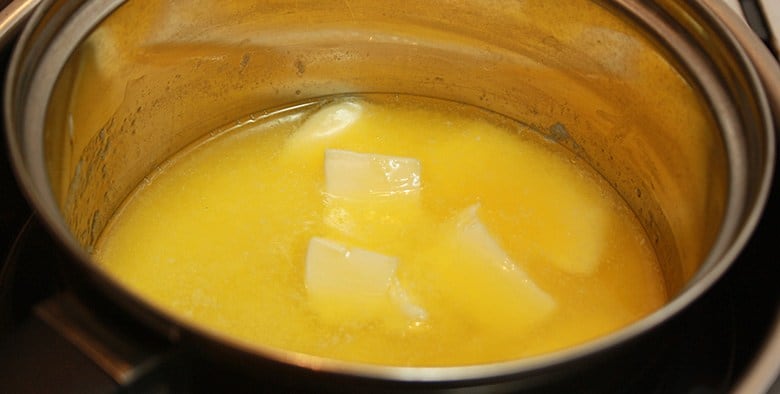
Prep time: 40 minutes or less (including decarboxylation)
Cook time: 60 minutes or less
Materials:
- Double boiler
- Spoon
- Cheesecloth or fine strainer
- Spatula
- Airtight glass container for cooling and storage
Ingredients:
- 7 grams (¼ ounce) decarboxylated cannabis
- 1 9oz jar ghee (clarified butter) OR ½ lbs of homemade clarified butter
- Water for double boiler base
Cooking the cannabis-infused ghee:
- Melt premade ghee in the top of a double boiler slowly, so it doesn’t scorch yet starts to bubble and simmer
- Slowly stir in decarboxylated cannabis
- Continue stirring until cannabis is well coated
- Let simmer, stirring occasionally for one hour
- OPTIONAL: use a candy thermometer to check temperature
Cooling the ghee:
- While ghee is infusing, secure cheesecloth or strainer over your glass container.
- After one hour, carefully pour mixture over the cheesecloth or strainer, separating the plant material from the butter.
- When plant material is cool enough to touch but still warm, squeeze as much liquid as possible from the plant material.
- If using cheese cloth, a double strain may be necessary.
- Let butter and water mixture cool to room temperature, cover, and store in the refrigerator. Ghee does not need refrigeration normally, but this herb-infused ghee does. Keep for one week.
- Put butter into an airtight container or jar.
BHO Cannabutter
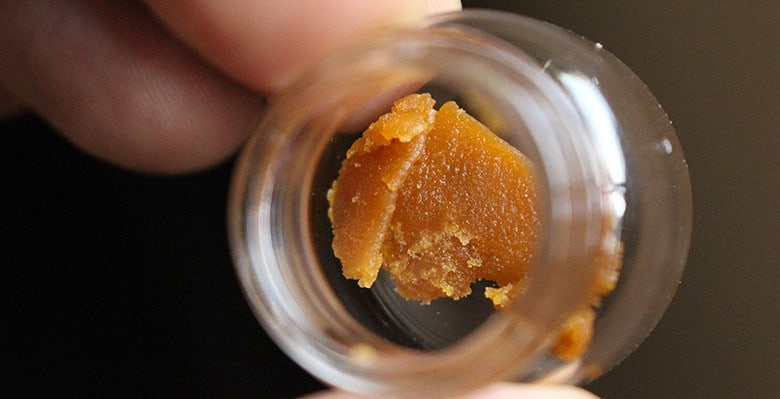
Making cannabutter with butane hash oil (BHO) is one of the easiest ways to make a simple infusion. The best part? No plant matter to strain and a shortened cooking time. However, decarboxylation is still needed to extract the optimal potency from the BHO.
Materials:
- Parchment paper
- Rimmed baking sheet
- Spatula
- Stockbot
- Measuring cup
- Spoon
- Glass container for cooling and storage
Ingredients:
- 1 gram BHO (half gram is also fine, it will just be less potent)
- 1 lbs butter
- 1 quart water
Decarboxylating the BHO:
- Preheat oven to 220 to 240℉
- Place BHO onto rimmed baking sheet lined with parchment paper
- Bake BHO at 220 to 240℉ for 25 minutes at 220, 15 to 20 minutes at 240.
- BHO should spread out, creating a sticky oil with plenty of holes.
- Let cool slightly or place in the fridge or freezer to harden up so that it’s easier to add into the cannabutter.
Infusing the BHO cannabutter:
- Bring 1 quart of water to a boil in a stockpot or large saucepan. The water prevents the butter from scorching and preserves flavor, and makes it easy to get the cannabutter out of the container.
- Once boiling, drop in the butter allowing it to melt.
- Reduce the heat to low.
- Add the decarboxylated BHO, stirring well.
- Continue stirring as BHO melts completely and mixes into the butter, about five minutes.
- Once melted and mixed, take butter mixture off of the heat and pour into glass container.
Cooling the butter:
- Let butter and water mixture cool to room temperature, cover, and place in the refrigerator to fully harden.
- Once hardened, the butter will separate from the water. Remove separated butter.
- Put butter into an airtight container or wrap in plastic wrap for storage.
Cannabutter with Salted Garlic-Herb Flavor
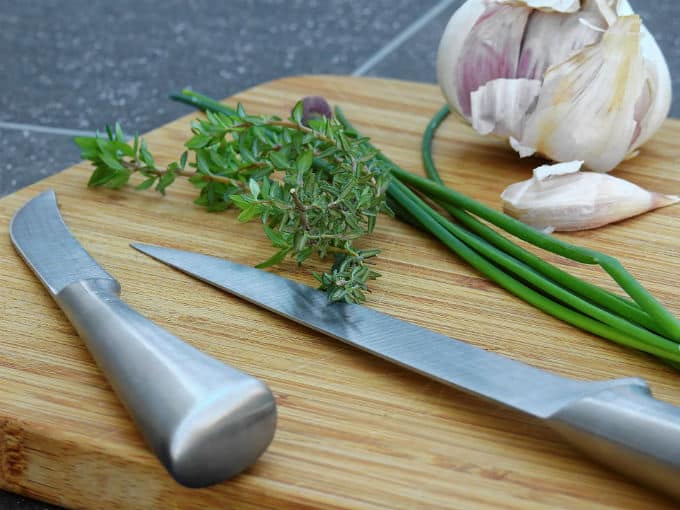
Flavors can be infused into cannabutter after making the butter using one of the recipes below. When it comes to flavoring your cannabutter, the opportunities are endless. However, a salted garlic-herb butter is a classic and delicious way to both mask improve the flavor of a traditional cannabutter.
Materials:
- Medium mixing bowl
- Spoon
- OR food processor
- Parchment paper
Ingredients:
- ½ cup premade cannabutter, softened
- 1-2 garlic cloves, crushed
- ¼ cup chopped, fresh parsley
- 3 tbs finely chopped chive
- 1 tsp black pepper
- 1 tsp sea salt or celtic salt
Making Salted Garlic-Herb Cannabutter:
- Soften cannabutter by leaving it unrefrigerated for a few hours. OR gently soften the butter by placing it in heat safe dish, then pour boiling water into a larger dish. Set the dish with the cannabutter into the other dish for just a few seconds until it’s soft enough to work with but not melted.
- Add softened cannabis into a mixing bowl or food processor.
- Mix in crushed garlic, to taste.
- Mix in parsley, chive, black pepper, and salt.
- Pop mixture onto parchment paper and roll to create a log-like form.
Keep the cannabutter rolled in parchment paper and store in a glass container for refrigeration. It will keep for about 3 days. For longer storage, place butter into ice cube trays and cover with a hefty coating of plastic wrap. Storage will last for about one month.
How Do You Heat Cannabutter?
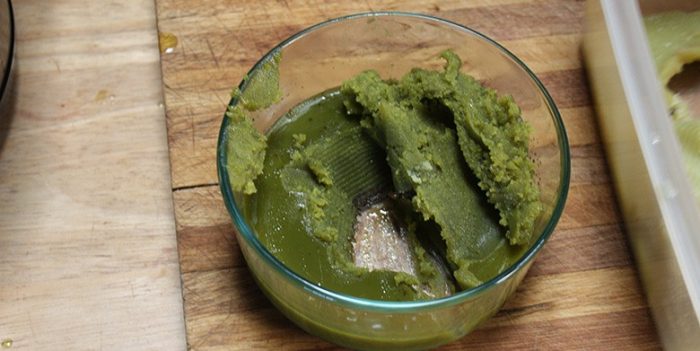
You should never try to rush the cannabutter process by using high heats. The active components in cannabis, called cannabinoids, are heat sensitive. If the temperature of your butter gets too high, the cannabinoids will burn off and you’ll be left with foul-tasting butter that won’t ease your pain or send you into a blissful high.
The optimal temperature for all cannabutters is 240℉ (115℃) or lower. Cannabutter should not be infused at temperatures above 325℉ (162℃). The best way to infuse butter is by using a low heat over prolonged periods of time. Not only will this preserve the cannabinoids and give you a better tasting butter, but it will also preserve any fat-soluble vitamins in the butter that are also sensitive to heat.
Tips For Baking And Cooking With Cannabutter
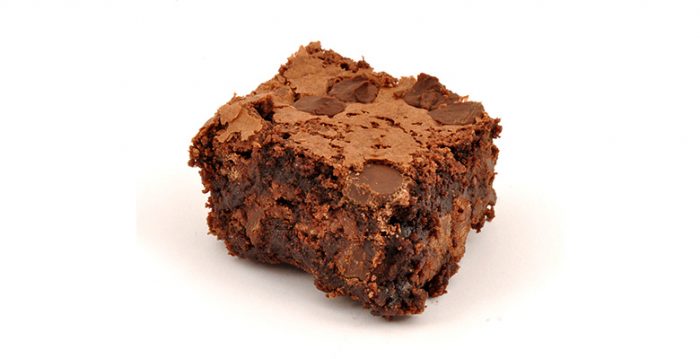
While cannabutter is easy to make, it can be difficult to cook with. As mentioned above, the active cannabinoids infused into the cannabutter easily burn off with heat. To maintain the psychoactivity of the butter, you’ll need to take a few basic tips into consideration. These include:
- Do not bake cannabutter at over 350℉ (176℃), at this point the THC, CBD, or other cannabinoids in the butter will evaporate.
- Opt for recipes that require a shorter baking time.
- Use a thermometer when cooking over the stove.
- Add cannabutter at the end of the recipe not the beginning.
- Do not microwave cannabutter.
- Soften to room temperature by leaving cannabutter on a clean countertop.
Instead of mixing cannabutter into infused foods while cooking, you may want to consider using the infused butter to top baked goods or cooked vegetables, melt inside coffee, place a pad of cannabutter in hot pasta sauce right before serving.
How Long Does Cannabutter Last?
When placed in an air-tight container or wrapped in plastic wrap, cannabutter can last several weeks in the refrigerator. When placed in the freezer, cannabutter can last as long as six months. Cannabutter is outdated when it begins to change color, change odor, or develops mold. When oxidation occurs, butter turns a dark yellow or brown.
Using salted butter will preserve the cannabutter for a longer period of time. You can also add a little sea salt or celtic salt to the butter as a preservative and to enhance the flavor. If infusing unsalted butter, keeping the butter in the freezer is the best way to prolong life.
When thawing previously frozen butter, place the butter in the refrigerator then warm on the countertop to room temperature after the refrigerated cannabutter is no longer frozen. Drastic changes in temperature can increase the likelihood that the butter becomes rancid more quickly.
How Potent Is My Cannabutter?
To figure out the potency of your cannabutter, there are several handy calculators available online. Find one here.

![You are currently viewing How To Make Cannabutter: Beginners Guide to Making Edibles [2021]](https://www.hailmaryjane.com/wp-content/uploads/2018/01/Five-Easiest-Ways-To-Make-Cannabutter-1.jpg)


